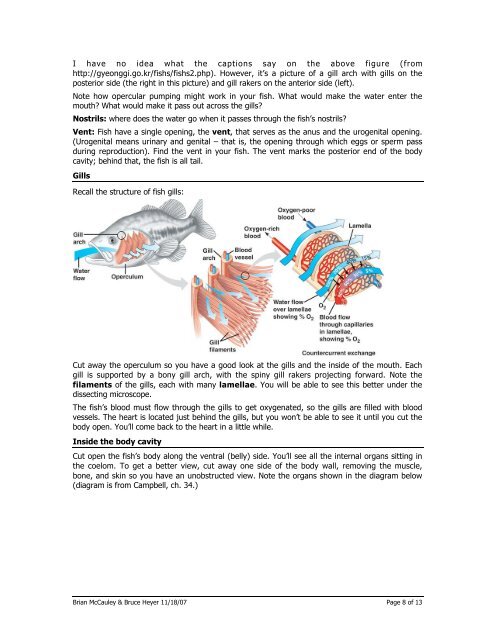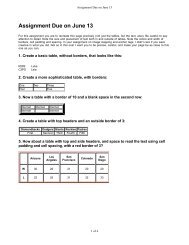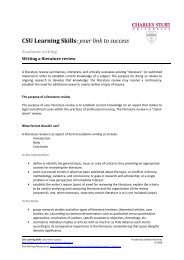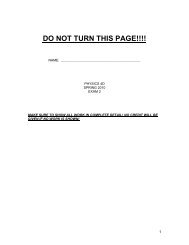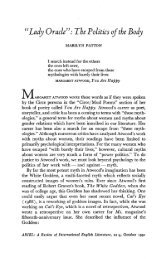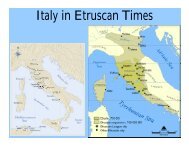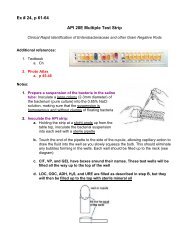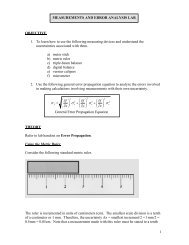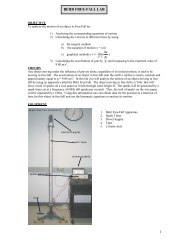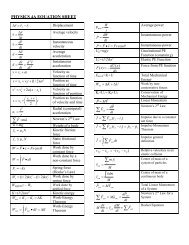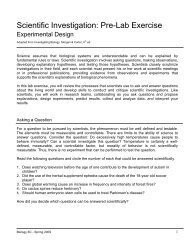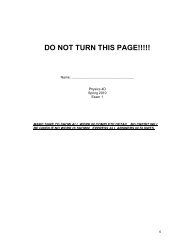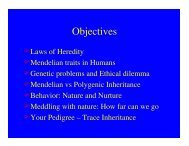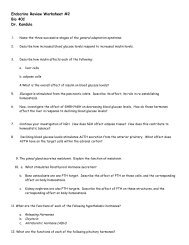Introduction to Chordates & Fish Anatomy - De Anza College
Introduction to Chordates & Fish Anatomy - De Anza College
Introduction to Chordates & Fish Anatomy - De Anza College
Create successful ePaper yourself
Turn your PDF publications into a flip-book with our unique Google optimized e-Paper software.
I have no idea what the captions say on the above figure (from<br />
http://gyeonggi.go.kr/fishs/fishs2.php). However, it’s a picture of a gill arch with gills on the<br />
posterior side (the right in this picture) and gill rakers on the anterior side (left).<br />
Note how opercular pumping might work in your fish. What would make the water enter the<br />
mouth What would make it pass out across the gills<br />
Nostrils: where does the water go when it passes through the fish’s nostrils<br />
Vent: <strong>Fish</strong> have a single opening, the vent, that serves as the anus and the urogenital opening.<br />
(Urogenital means urinary and genital – that is, the opening through which eggs or sperm pass<br />
during reproduction). Find the vent in your fish. The vent marks the posterior end of the body<br />
cavity; behind that, the fish is all tail.<br />
Gills<br />
Recall the structure of fish gills:<br />
Cut away the operculum so you have a good look at the gills and the inside of the mouth. Each<br />
gill is supported by a bony gill arch, with the spiny gill rakers projecting forward. Note the<br />
filaments of the gills, each with many lamellae. You will be able <strong>to</strong> see this better under the<br />
dissecting microscope.<br />
The fish’s blood must flow through the gills <strong>to</strong> get oxygenated, so the gills are filled with blood<br />
vessels. The heart is located just behind the gills, but you won’t be able <strong>to</strong> see it until you cut the<br />
body open. You’ll come back <strong>to</strong> the heart in a little while.<br />
Inside the body cavity<br />
Cut open the fish’s body along the ventral (belly) side. You’ll see all the internal organs sitting in<br />
the coelom. To get a better view, cut away one side of the body wall, removing the muscle,<br />
bone, and skin so you have an unobstructed view. Note the organs shown in the diagram below<br />
(diagram is from Campbell, ch. 34.)<br />
Brian McCauley & Bruce Heyer 11/18/07 Page 8 of 13


